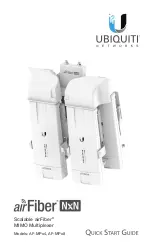
12
Chapter 1 - Introduction & Description
1.3.1.2 Communications
The basic functions of multiplexing are to make communications more
efficient, to provide a means of improving accuracy of asynchronous
communications by using synchronous techniques, and to improve data
security by encrypting several data streams into one coded link.
The channel devices can be any asynchronous RS232 compatible units,
from “dumb terminals” to personal computers running asynchronous
communications software. The connection between the channel devices
and the MultiMux is made through an RS232 interface cable.
Asynchronous modems (long haul or short haul), asynchronous modem
emulators and asynchronous line drivers (DCE devices) can be used in
this connection (up to 38.4K bps) to extend the distance between the
channel devices and the MultiMux.
The connection between the two MultiMuxes is the composite link, and
can be up to 128K bps. Using an internal modem, ISDN terminal
adapter, DSU, or external device, the MultiMux can be connected to
different types of communications links, such as a dial-up line, leased
line, Basic Rate Interface (BRI) ISDN service, or a DDS network. If an
external link device is used the MultiMux can communicate with it using
either the RS232 or V.35 standard.
Summary of Contents for MMH900
Page 1: ...MMH900 Series Statistical Multiplexer User Guide...
Page 7: ...Chapter 1 Introduction Description...
Page 26: ...Chapter 2 Configuration...
Page 33: ...Chapter 3 Front Rear Panel Descriptions...
Page 44: ...Chapter 4 Installation...
Page 51: ...Chapter 5 Commands...
Page 89: ...Chapter 6 Operating Procedures...
Page 96: ...Chapter 7 Troubleshooting...
Page 111: ...Chapter 8 Service Warranty Technical Support...
Page 116: ...Appendices...
Page 184: ...Glossary...
Page 193: ...Glossary 193 X Y Z...
Page 200: ...S000315A...












































